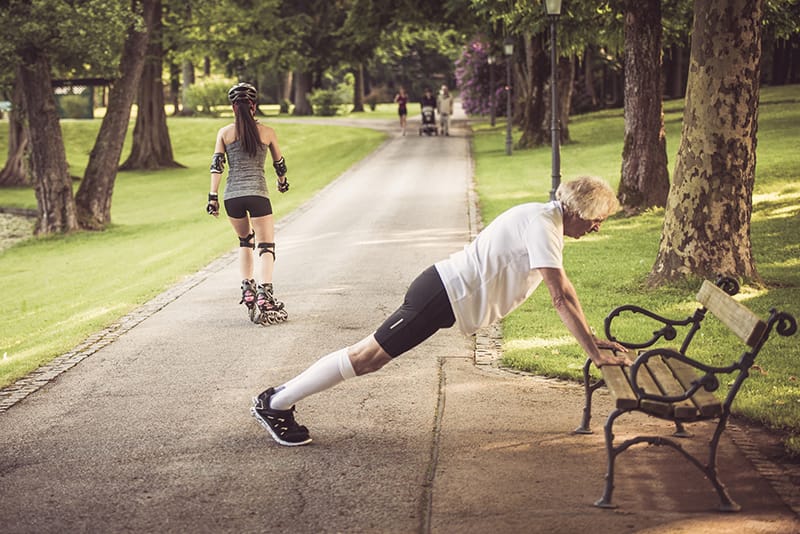Muscle atrophy and loss of strength lead to many health problems as you age. A targeted exercise program in your later years can help you prevent that.
Posted
on Tuesday, November 13, 2018
 As a population, we are continuing to live longer. It’s estimated by 2050, two billion people worldwide will be over the age of 65. As you age, you become more prone to developing certain health problems — urinary incontinence, delirium, dementia, osteoporosis, falls and sarcopenia.
As a population, we are continuing to live longer. It’s estimated by 2050, two billion people worldwide will be over the age of 65. As you age, you become more prone to developing certain health problems — urinary incontinence, delirium, dementia, osteoporosis, falls and sarcopenia.
These aging issues are commonly referred to as geriatric syndromes. They are usually complex in that they have multiple causes and involve more than one body system. One of the most complex — and damaging — is sarcopenia.
Sarcopenia is a common cause of muscle weakness in the elderly.
Aging is often characterized by the progressive loss of tissue and organ function over time. You begin to lose one-tenth to one-half percent of muscle mass annually beginning in your 30s. The decline speeds up in your 50s when you start losing one to two percent of muscle every year.
This age-related loss of muscle mass, strength and power is known as sarcopenia. It’s a key component of frailty in the elderly. Sarcopenia has been associated with adverse health outcomes such as hospitalization, physical disability, falls, fractures — even death. Up to 15 percent of people older than 65 and as many as 50 percent of people older than 80 years have sarcopenia.
Many things cause you to start losing muscle.
Sarcopenia is often seen in people who are inactive. However, it’s also found in those who are physically active, suggesting multiple factors contribute to its development. Current research suggests it may be caused by:
- A reduction in cells that are responsible for sending signals from the brain to the muscles to start movement
- Decreased concentration in hormones such as growth hormone, testosterone and insulin-like growth factor — which help regulate the growth and development of muscle
- A reduction in the body’s ability to turn protein into energy
Exercise can help prevent sarcopenia.
Several strategies have been evaluated for preventing sarcopenia and its adverse health outcomes, including exercise training, nutritional supplementation, and hormonal therapies. Currently, only physical exercise has shown a positive effect.
Both resistance and aerobic training have been shown to improve overall health and wellness, no matter your age. But the only proven method for the prevention and improvement of sarcopenia is progressive resistance training. A review of 121 sarcopenia research trials concluded that progressive resistance training improves not only muscle strength but also physical performance measures such as gait speed and the ability to rise from a chair. These two performance measures two critical components for fall prevention in older adults.
With progressive resistance training, you need to exercise your muscles against an increasing external force two to three times a week for at least eight to 12 weeks. The program is progressive, meaning that the number of repetitions, sets or load should increase gradually over time based on your capabilities and progress.
Types of Sarcopenia Exercises
Progressive resistance training exercises focus on large muscle groups throughout your whole body. Programs vary depending on your individual condition and capabilities, but progressive resistance training may include:
- Push-ups on a counter
- Seated chair push-ups
- Squats with chair touch
- Step ups
- Standing shoulder rows with anchored resistance
A physical therapist can help you begin a strengthening program customized just for you. If you feel like you’re losing strength or muscle mass — whether it’s from sarcopenia or any other injury or health issue — schedule an appointment with a physical therapist to improve your movement and ability.
All information offered on The Iowa Clinic website is intended to serve as general educational information only. Any content, product or service is not intended to be a substitute for professional medical advice, diagnosis or treatment. If you believe you have a medical issue, always seek the personalized advice of your physician or qualified healthcare provider.
The Iowa Clinic may provide links to outside sources for additional resources or information and is in no way responsible for the information provided by other organizations or sources. © The Iowa Clinic, 2024